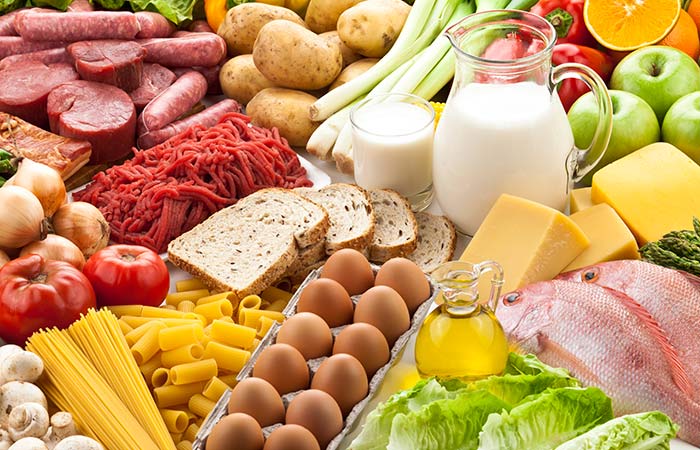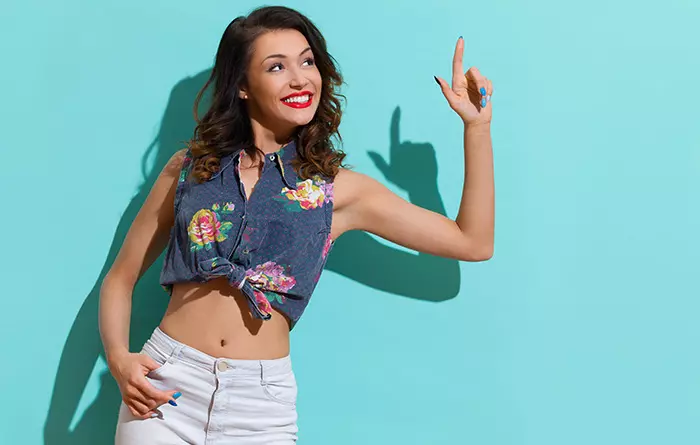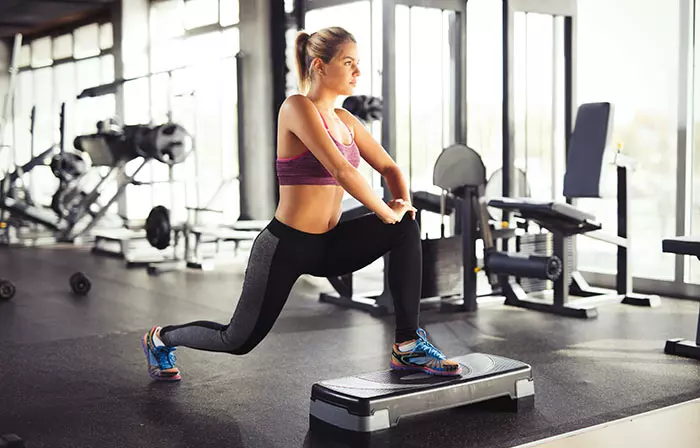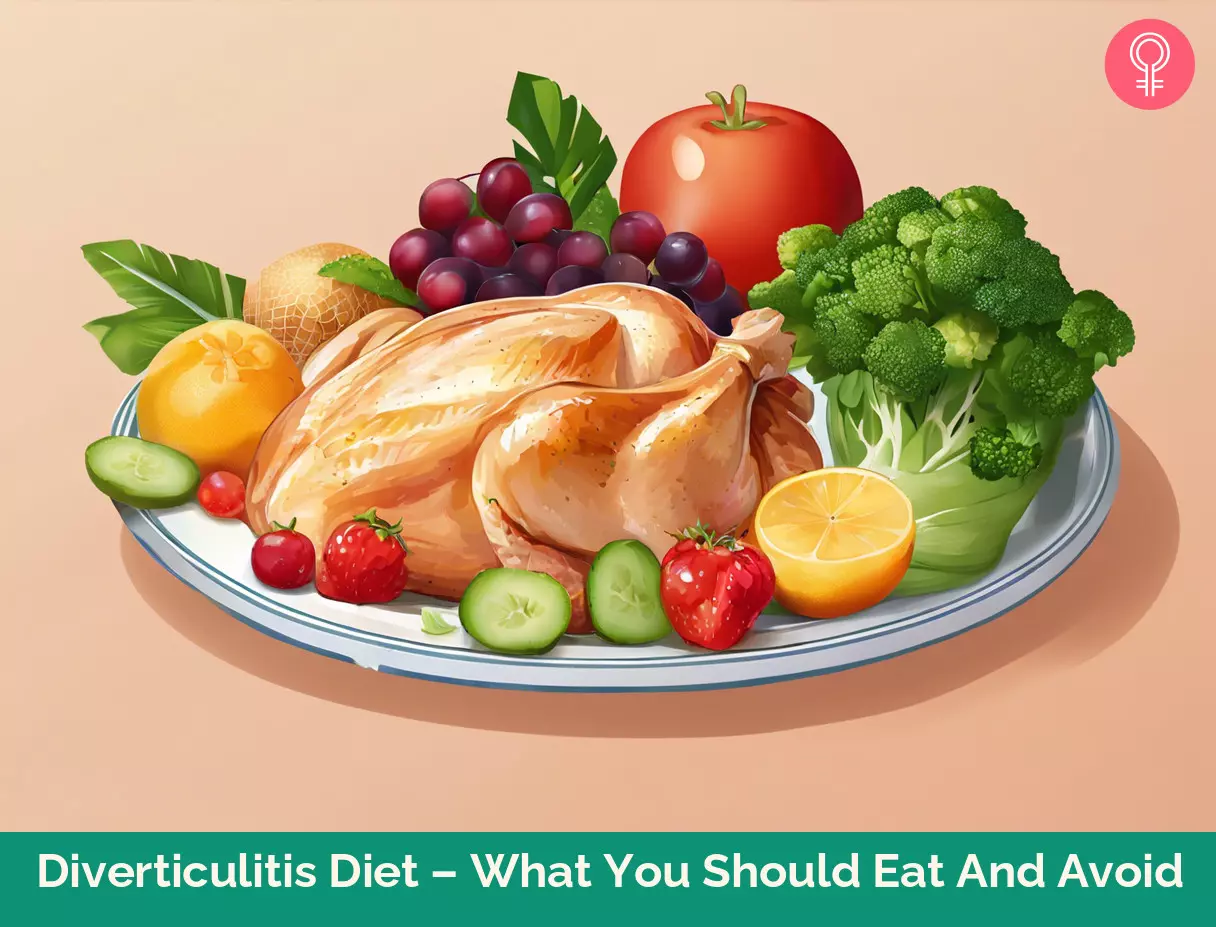About 4% of people with diverticulosis develop diverticulitis, as per the American Gastroenterological Association. And approximately 15% of them may develop other complications like perforationi A hole or opening made by piercing the surface of a body organ, such as the intestines, stomach, gallbladder, or rectum. , fistulai An abnormal or surgical passage occurring between hollow organs and the body surface or between two different organs. , and abscessesi Accumulation or build-up of pus within a body tissue, organ, or cavity due to a bacterial infection. (1). This is the reason doctors recommend high-fiber foods. Read to know which fiber-rich foods to include in your diet, which ones to avoid, and how to consume these foods without irritating your colon and to maintain your colon health. Scroll down.
Diverticulitis And Fiber-Rich Foods – How It Helps
Fiber is a type of carbohydrate that cannot be digested by humans. Fiber is of two types, soluble and insoluble, depending on its ability to dissolve in liquids. Both soluble fibers and insoluble fiber are of great importance as they help add bulk to the stool, slow down the transition time of digested foods in the colon, help in the absorption of nutrients, suppress appetite, and help good gut bacteria to flourish, which improves digestion (2) (3). Without fiber, you can suffer from constipation, and the colon has to work extra hard to pass the stool – leading to diverticulosis or bulging of the colon wall. Consuming high-fiber foods for weight loss can help prevent your colon from exerting pressure to excrete the stool, thereby preventing irritation of the colon walls. But ensure you do not consume too many high-fiber foods too soon. There are many diets available that claim to help treat symptoms of diverticulitis including a low-residue diet, anti-inflammatory diet, high-fiber diet,low-fat diet and low sugar diet. However, the right diet depends on the individual needs and body. Fiber intake is good for relieving the symptoms and improving overall digestive health. You should be very careful while incorporating fiber-rich and nutrient-dense foods into meal- planning. How to do it right? Follow our diverticulitis diet plan that will not shock your colon but instead help you make a smooth transition. Take a look.
Diverticulitis Diet
Phase 1 Diverticulitis Diet Chart
Phase 1 of the diverticulitis diet requires you to be on clear liquids for at least three days. This may sound a little harsh, but the reason doctors recommend this is that eating fiber-rich foods right away can further irritate the colon wall, leading to severe pain and bleeding. Liquids, on the other hand, will provide the required nutrition without the need for the digestive organs to work too hard. So, here’s how you should go about it.
Why This Works?
Since you will be in pain and experience loss of appetite, this diet chart contains a minimum amount of foods that are nutritious and help your body function properly. Start your day with two cups of water to help soften the stool and soothe the colon walls. It will also help flush out the toxins. For breakfast, strain the fruit juice to prevent adding any fruit fiber to your diet. If you feel hungry after a few hours, you can have a cup of white tea to bolster your immune system. For lunch, have vegetable or bone broth. Leave out the veggies for a few days to avoid putting any strain on your digestive system. For the evening snack, have a cup of fruit juice to help rejuvenate and replenish your body with vitamins and minerals. For dinner, have a cup of lentil broth without the lentils and a small cup of jelly to satiate your taste buds. Now, let’s find out which foods you should eat and top 10 foods to avoid with diverticulitis, while you are in Phase 1 of this diet.
Diverticulitis Foods To Eat – Phase 1
Tea/coffee (without milk) Water Broth Freshly pressed fruit juice without pulp Ice popsicles without fruits Jelly Minimum amount of salt
Diverticulitis Foods To Avoid – Phase 1
Vegetables Fruits Nuts and seeds Protein – eggs, meat, fish, lentils, beans, mushrooms, soy chunks, tofu, etc. Milk, yogurt, buttermilk, cheese, etc. Butter, ghee, olive oil, rice bran oil, etc. Grains Herbs and spices Alcohol, aeratedi Infused with air or other gasses. Usually refers to fizzy drinks containing carbon dioxide, such as cola or soda. beverages, and artificially sweetened beverages Tobacco
So, it is clear from the above list that you have to avoid all foods that require you to chew or need the digestive organs to function well. You can also improve your condition by exercising regularly. Here’s what you should do. Jane, a blogger, shared her experience with diverticulitis and how she changed her diet to help manage her condition. She explained, “I have limited bread, rice, and pasta because of the carbs. I am not into lentils and do not eat beans. I stopped eating cheese for the most part because of the calories and no sugary desserts or baked goods at all (i).”
Exercises For Diverticulitis Diet Phase 1
Stretch and warm-up Balasana Supta Udarakarshanasana Savasana
How You Will Feel By The End Of Diverticulitis Diet Phase 1?
After three days (or more, depending on the healing), you will start to gain appetite and experience less pain. You will become more active, and your mood will also improve. Note: It is important to consult with a doctor before beginning any diet, especially following a flare-up of diverticulitis. They can monitor your recovery process and offer personalized suggestions. Since every person’s reaction to dietary modifications is different, personalized guidance is necessary. So, now, you can safely get on to the next phase of the diverticulitis diet. Let’s find out what’s in it.
Phase 2 Diverticulitis Diet Chart
In Phase 2, you will slowly start including low-fiber foods in your diet. You should be cautious as you may feel you can digest anything, but that’s not true. Help your digestive organs to resume their normal functioning without shocking them with too many fiber-rich foods. Here’s what you should eat.
Why This Works?
As you will start feeling better by this time, you can add low-fiber foods to your diet. Start your day by drinking two cups of water to flush out the toxins. Have a slice of white bread or a pancake made of flour, which is low in fiber. Have a cup of black coffee to feel fresh and rejuvenated. Freshly pressed fruit juice without the pulp will help soothe your colon. Or 1 pancake + 1 cup black coffee Or Poached chicken + mashed potatoes + 1 small scoop of ice cream Have a substantial lunch with white rice, well-cooked veggies, and yogurt to aid digestion and provide nutrition to your body. Green tea and a cracker will help curb your hunger in the evening and also scavenge the harmful free oxygen radicals. Make your dinner exciting by having pasta with white sauce or poached chicken and mashed potatoes. End your meal with a small scoop of ice cream to keep you motivated to follow this diet chart. Here’s the list of foods to avoid and eat while you are in phase 2 of the diverticulitis diet.
Diverticulitis Foods To Eat – Phase 2
Well-cooked and canned veggies Fruits without pulp, skin, or seeds White bread, white pasta, white rice, flour crackers Milk, yogurt, ice cream, pudding, sour cream, cheese Chicken, eggs, tofu, and fish Butter, oils, margarine Waffle and pancake (made of flour) Buttermilk, fresh fruit juice (without pulp), water Finely ground herbs and spices in little amounts
Diverticulitis Foods To Avoid – Phase 2
Raw or partly cooked vegetables Fruits with pulp, skin, or seeds Wheat bread, wheat pasta, brown/red/black rice, multigrain cereals, multigrain bread, multigrain crackers, etc. Beef, duck, turkey, pork Nuts and seeds Dried fruits Whole spices and herbs Aerated drinks, pulpy fruit juices, and alcohol
So, you see, you should eat low-fiber foods and avoid consuming high-fiber foods till your colon is healed to a great extent. Exercise can also speed up your healing. Here’s a list of exercises that will help you.
Exercises For Diverticulitis Diet Phase 2
Stretch and warm-up Pavanamuktasana Balasana Ardha Matsyendrasana Trikonasana Ustrasana Supta Udarakarshanasana Savasana
How You Will Feel By The End Of Diverticulitis Diet Phase 2?
By the end of Phase 2, you will feel much better as your stomach ache will vanish, and you will be able to digest food with ease. Your appetite will return to its normal levels, and you can go about your daily activities with more ease. Before you decide to move on to the next phase, you should consult your doctor. If he gives a thumbs up, you can move on to Phase 3. Here’s what you should do in Phase 3 of the diverticulitis diet.
Phase 3 Diverticulitis Diet Chart
You can start consuming fiber-rich foods, which will help prevent constipation and bloating and improve digestion. Here’s what you should eat.
Why This Works?
Having two cups of water in the morning as soon as you wake up is mandatory to help improve bowel movement, soothe the colon, and flush out the toxins. In this phase, you will consume fiber-rich foods for all the meals. Eggs are a great source of protein, wheat bread and multigrain cereal are rich in fiber, and milk is a good source of calcium, vitamin D, and protein. Apples and dates are loaded with vitamins, minerals, and fiber, and almonds are a great source of healthy fats. If you feel hungry after a few hours, you can have a small amount of ricotta cheese. Or Multigrain cereal + milk + chopped apple + dates + 2 soaked almonds Brown rice with stir-fried veggies + mushrooms + 1 cup buttermilk Or Spinach, cheese, and shredded chicken stuffed wheat pita bread + 1 sapodilla For lunch, have a salad with a dressing of your choice or brown rice, mushrooms, and stir-fried veggies to get all the nutrients. At the end of your lunch, have a cup of buttermilk to provide your gut with good bacteria. You can have carrot or apple juice for your evening snack. They are a good source of vitamin A, minerals, and fiber. For dinner, have fiber-rich foods, such as quinoa, black beans, spinach, wheat pita bread, and sapodilla. Also, include chicken as it is a good source of protein. Cheese adds flavor, and ice cream helps keep your dinner exciting. Take a look at the next section to find out which foods you should eat and avoid while you are in Phase 3 of the diverticulitis diet.
Diverticulitis Foods To Eat – Phase 3
Veggies – Broccoli, spinach, cabbage, lettuce, bok choy, Chinese cabbage, carrot, beetroot, celery, radish, collard greens, rocket spinach, cauliflower, kale, yam, tomato, cucumber, bottle gourd, bitter gourd, snake gourd, okra, eggplant, onion, pumpkin, and squash. Fruits – Apple, banana, plum, peach, pear, pineapple, pluot, avocado, pomegranate, raspberry, blueberry, strawberry, gooseberry, mango, passion fruit, dragon fruit, and orange. Protein – Chicken, beef, fish, mushroom, lentils, beans, soy chunks, and tofu. Dairy – Milk, yogurt, frozen yogurt, cheese, ice cream, sour cream, cottage cheese, and ricotta cheese. Oils And Fats – Ghee, butter, olive oil, rice bran oil, flax seed oil, peanut butter, sunflower butter, flax seed butter, hemp seed oil, etc. Seeds And Nuts – Pumpkin seeds, cucumber seeds, chia seeds, flaxseeds, almond, hazelnuts, pine nuts, macadamia nuts, walnuts, Brazil nuts, pistachios, etc. Herbs And Spices – Pepper, turmeric, chili powder, chili flakes, cumin seeds, coriander seeds, allspice, cardamom, cinnamon, clove, mace, nutmeg, saffron, ginger, garlic, oregano, cilantro, basil, dill, fennel seeds, dried fennel, rosemary, thyme, bay leaf, etc. Beverages – Buttermilk, water, freshly pressed fruit and vegetable juices, detox water, and coconut water.
Diverticulitis Foods To Avoid – Phase 3
Protein – Turkey, pork, and duck. Beverages – Alcohol, aerated beverages, artificially sweetened and flavored beverages, and packaged juices.
While you are in Phase 3, you can gradually start doing cardio along with yoga asanas to keep yourself active and fit. Here’s your phase 3 exercise routine.
Exercises For Diverticulitis Diet Phase 3
Head tilt – 1 set of 10 reps (right and left) Neck rotations – 1 set of 10 reps (clockwise and anticlockwise) Shoulder rotations – 1 set of 10 reps (clockwise and anticlockwise) Arm rotations – 1 set of 10 reps (clockwise and anticlockwise) Wrist rotations – 1 set of 10 reps (clockwise and anticlockwise) Ankle rotations – 1 set of 10 reps (clockwise and anticlockwise) Spot jogging – 5 minutes Burpees – 2 sets of 10 reps Jumping jacks – 2 sets of 20 reps Full squat – 2 sets of 10 reps Side lunges – 1 sets of 10 reps Forward lunges – 2 sets of 10 reps Mountain climbers – 2 sets of 12 reps Apanasana Setu Bandha Sarvangasana Paschimottanasana Balasana Utkatasana Adho Mukha Svanasana Uttanasana Trikonasana Savasana
How You Will Feel By The End Of Diverticulitis Diet Phase 3?
By the end of Phase 3 of the diverticulitis diet, your digestion will improve, the severe pain in the colon will diminish, and you will regain control of your life. Check out the following section for some simple yet effective recipes for diverticulitis!
Diverticulitis Diet Recipes
Here are three diverticulitis-friendly recipes that are low in fiber and gentle on the gut:
1. Ginger Carrot Soup
Blend cooked carrots with a touch of ginger, vegetable broth, and a pinch of salt until smooth.
2. Mashed Potatoes With Spinach
Boil potatoes until tender, then mash them with a touch of olive oil. Mix in cooked, finely chopped spinach for added nutrition.
3. Baked Chicken With Zucchini
Season boneless, skinless chicken breasts with a little salt and olive oil. Add sliced zucchini to the baking dish. Bake until the chicken is fully cooked. These recipes provide tender and nourishing meals for individuals with diverticulitis, reducing the risk of irritation or discomfort during a flare-up. Remember to consult a healthcare professional for personalized dietary advice. The following sections will help you understand the condition better. For your convenience, here are a few other causes and symptoms of diverticulitis.
Diverticulitis Causes
Aging: The incidence of diverticulitis increases with age. Pressure from the outside may result in the intestinal wall getting stressed and torn. Lack of exercise Obesity Smoking Certain medications, including nonsteroidal anti-inflammatory drugs
Diverticulitis Symptoms
Loss of appetite Diarrhea or constipation Abdominal cramps Nausea and vomiting Swelling Fever
You should also keep a few points in mind if you have diverticulitis. Here’s what you should know.
Points To Remember
You should totally stop smoking. Alcohol is a strict no-no. Eat less spicy food to avoid irritating your colon wall. Take the doctor prescribed antibiotics as per the instructions. Consult your doctor before starting this diet. Ask your doctor if you should take Psyllium in addition to following the diverticulitis diet. Regular gentle exercise like walking or yoga supports gut health and helps prevent flare-ups. Get 7-8 hours of sleep every night. Go on walks to help fight depression and anxiety that come along with this condition. Join a diverticulitis group to help keep you spirited about fighting this condition. Focus on your water intake, and make sure to drink 8-9 glasses of water a day. Adhere to the food restrictions and do careful meal planning. Diverticulitis may reappear if you do not take good care of what you eat and how you lead your life.
How long should I follow the diverticulitis diet? How long you need to follow the diverticulitis diet depends on the severity of your condition and your recovery progress. Consult your doctor for personalized advice based on your recovery progress. Does chocolate affect diverticulosis? Chocolates, caffeine, and spicy food may all lead to diverticulitis pain and flare-ups. Is oatmeal good for diverticulitis? A high-fiber diet and food like oatmeal can help ease bowel movement, reduce pressure on the colon, and prevent diverticulitis flare ups. Does stress bring on diverticulitis? Stress is known to lead to inflammation that can worsen any existing health condition and affect your system negatively. Hence, it helps to avoid stress if you seem vulnerable to diverticulitis. Also, eating low-fibre and high-fat meals can stress your digestive system, leading to worsening of the condition.
Illustration: Diverticulitis Diet – What You Should Eat And Avoid
Check out this video to learn about a tailored diet plan for diverticulitis management. Get a better understanding on what to eat and how to ease the symptoms, and promote your gut health.















